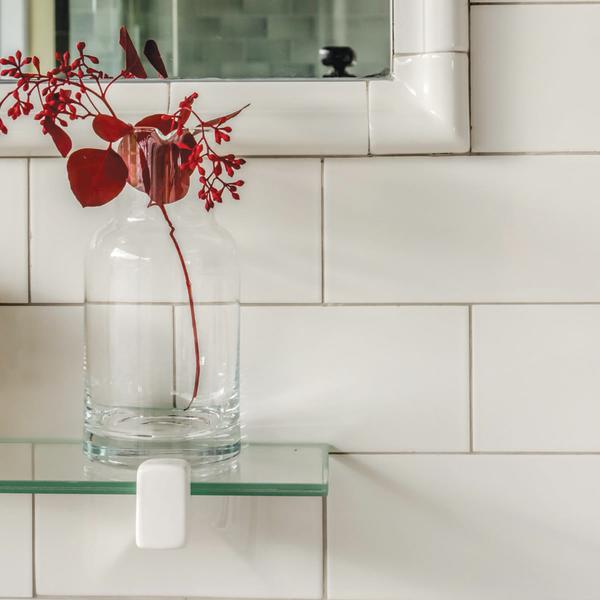
The look emulates the easy-to-clean marble floors of antiquity, reproduced in paint for softwood flooring, then in linoleum or vinyl tile.
Stickley Creative
In an otherwise pristine house built in 1907, the kitchen shown replaced a 1970s avocado bomb (complete with worn indoor–outdoor carpeting!). The house in Portland, Oregon, has a traditional plan and Colonial Revival details, including a neoclassical portico and a Palladian window. Nevertheless, its revival kitchen would fit perfectly into any house of the era: an American Foursquare, a Tudor or Dutch Colonial Revival, or a Craftsman house or bungalow.
The hygienic linoleum floor, white-enameled cabinets, and subway-tile backsplash are still-practical elements that reflect the concern with sanitary surfaces. (Germ awareness was growing at the turn of the 20th century: white tile and paint show the dirt, and are easy to clean.) The brightness of the room feels modern. Yet, given the history of kitchen evolution, a white kitchen is not at odds with an old house, even when woodwork in other rooms is natural oak or fir.
A room outfitted like this one, in a simple, classic manner, also makes a good model for a conjectural kitchen suitable for a house of the Victorian period or older. Those older homes certainly would have seen their archaic kitchens updated, either at the turn of the 20th century, or with the advent of electrical service some decades later.
For a Timeless Kitchen
Bin Pulls
Here nickel fittings mix with brass hardware; nickel is a good choice for kitchens post-Victorian but prewar.

Subway tile.
Transom Operator
The very vertical transom operator hardware (see window in photograph) from the House of Antique Hardware, which also sells window-transom hooks and fasteners, hoah.biz
Grout & Tile
Off-white subway tile with a darker grout than might be used in a bathroom makes a classic wall or backsplash. Historic 3″x 6″ tile is produced by Subway Ceramics, subwaytile.com
Green-Yellow Paint
Yellow was long recommended as a cheery, clean color for kitchens. The green tinge here complements orangey wood accents. Shown: ‘Golden Delicious’ 390 and ‘Marblehead Gold’ HC-11 from Benjamin Moore.
- Checkerboard Floor: The look emulates the easy-to-clean marble floors of antiquity, reproduced in paint for softwood flooring, then in linoleum or vinyl tile. This one is Marmoleum tiles by Forbo, forbo.com
- Cabinet Feet: A recessed kickspace screams postwar; for earlier kitchens, it’s better to bring cabinets down to the floor or give them “feet,” like furniture.
- Butler’s Pantry: This house retained its original, never-painted butler’s pantry, complete with a copper sink. It marks a transition between the “sanitary” kitchen and dining-room woodwork.
- Enameled Cabinets: ”Enameled” meant finished in a high-gloss oil paint—very easy to keep clean. Factory finishes and even latex paint mimic the look today. In earlier eras, “white” meant anything from ivory to a light beige.
- Work Table: Not every kitchen needs a huge, plumbed island. Old kitchens incorporated work tables like this one, or a center table that did double duty for food prep and family meals.







